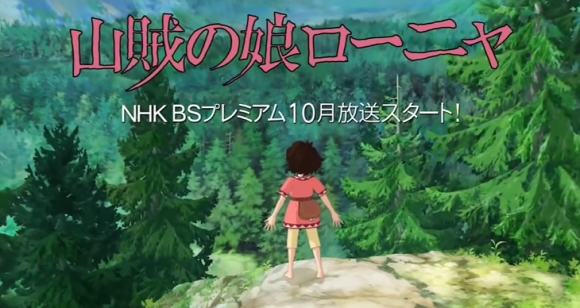
The works of Studio Ghibli are almost universally loved and respected, but there is one interesting criticism detractors lob against Japan’s premier anime production house. Barring the occasional music video or video game art design project, Ghibli’s body of work consists of feature films, all of which have been financial successes (even the widely panned Tales from Earthsea earned more than triple its budget).
Ghibli obviously can’t be blamed for building on its success by putting in the time, money, and, of course, effort to produce movies of such high quality. At the same time, some have wondered how the studio would fare operating under the notoriously tight time and budget constraints of television anime.
Judging from the recently released preview for Ghibli’s first TV series, Ronia the Robber’s Daughter, the transition, not to mention the lead character’s movements, might not be so smooth.
Pippi Longstocking may be Astrid Lindgren’s best known book among English speakers, but Ronia the Robber’s Daughter was also a sizeable hit for the Swedish author. After the children’s novel was published in 1981, it was adapted into a live-action film, musical, and stage production. Next comes an anime version, which is scheduled to premiere in October.
The TV series is a co-production between Studio Ghibli and CG specialist Polygon Pictures, whose work can be seen in anime such as Ghost in the Shell 2: Innocence, The Sky Crawlers, and the currently airing Knights of Sidonia.
Still, it’s the Ghibli name that has people outside anime circles in Japan interested in Ronia, including executives at public broadcaster NHK, the series’ home. To whet viewers’ appetites, NHK recently showed a 30-second clip of the show.
In some ways, Ronia and Ghibli seem like a good fit for each other. With an active, plucky female lead and a bucolic setting, it has the makings of the sort of whimsical yet reverent story Ghibli fans love and expect from the studio.
The art direction doesn’t look half-bad either, with inviting colors and some interesting camera angles.
But while some of the stills give a feeling of that old Ghibli magic, Ronia doesn’t look quite so charming in motion. For starters, there’s an undeniable stiffness to many of her expressions, which is starkly at odds with the atmosphere of energy and freedom the scene is trying to create.
▼ Wheeee…?
Her movements have a shaky, stuttering quality to them that might be acceptable for a real-time cut scene from the early PlayStation 3 era, but are far below what most have come to expect when watching CG movies or TV shows, even when one of the most exalted animation studios in the world isn’t involved.
▼ There’s even one sequence that looks like it’s straight out of a side-scrolling platform game.
Internet commentators in Japan have been similarly unimpressed.
“It doesn’t move like a Ghibli anime.”
“What? Seriously, what?”
“Blocky, jaggy polygons! Ghibli, are you sure this is the sort of thing you want your name associated with? Do you need the cash that badly?”
“Why did they do this all in CG?”
The remark about full CG is telling, as Ghibli isn’t exactly known for its expertise or experience in the field. Presumably, this is why Ronia is being produced in conjunction with Polygon Pictures, but without knowing exactly how the two studios are dividing the workload, it’s hard to say if this is a case of Ghibli stumbling in an unfamiliar medium or Polygon not rising to the occasion of working with its storied partner.
Some might argue the buck stops with Ronia director Goro Miyazaki, son of Studio Ghibli co-founder Hayao Miyazaki. While the younger Miyazaki’s second directorial effort, 2011’s From Up on Poppy Hill, received generally positive reviews, some still haven’t forgiven Goro for the artistic debacle Tales from Earthsea is commonly held to be. “Goro should just hang it up,” spat one commentator. “He’s got no talent.”
In Ronia’s defense, showing such an extensive preview three months before an anime premiers is sort of unusual. Consider, for example, that the first clip of Sailor Moon Crystal wasn’t released until just a month before its first episode.
It’s also worth noting that Ghibli has a new movie hitting theaters soon, two Tokyo museums are holding Ghibli exhibitions this summer, and the classic My Neighbor Totoro was recently shown on TV. It’s possible the timing of the Ronia release had more to do with the cross-promotional potential of flooding the media with Ghibli content and less to do with the people working on the show thinking it’s actually ready for the public’s eyes.
Whatever the reason, the anime’s questionable current quality gives a bitter twist to the clip’s ending sequence. We’re sure the shot of Ronia reaching for the stars is supposed to be representative of a child following her dreams, but it’s also a sober reminder of just how far Ghibli’s first TV anime has to go before it meets fans’ expectations.

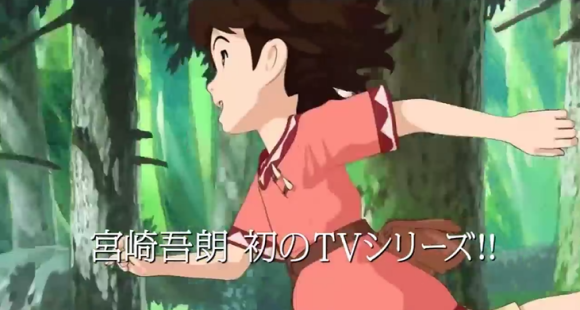
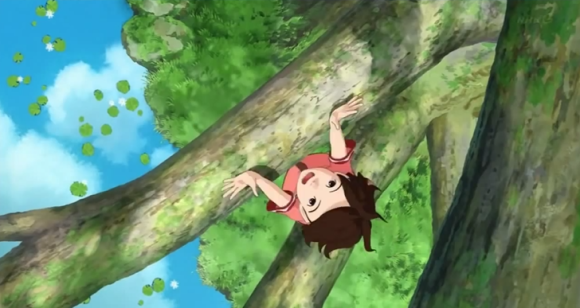
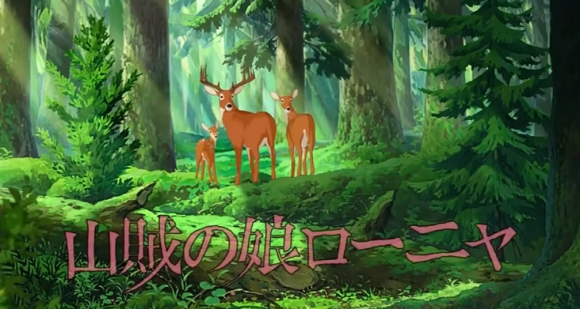
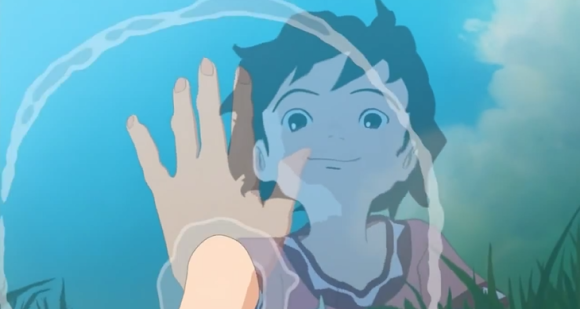
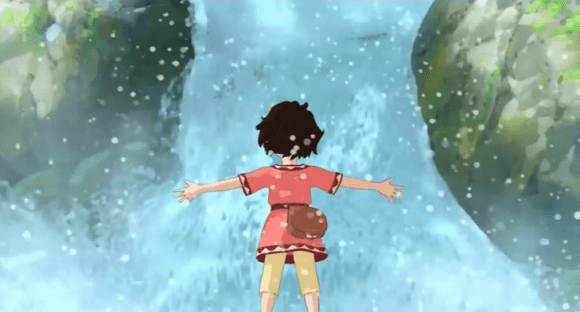
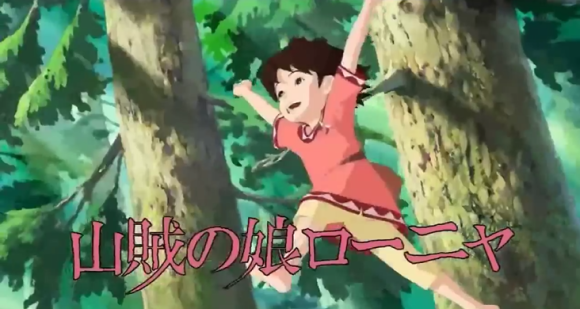
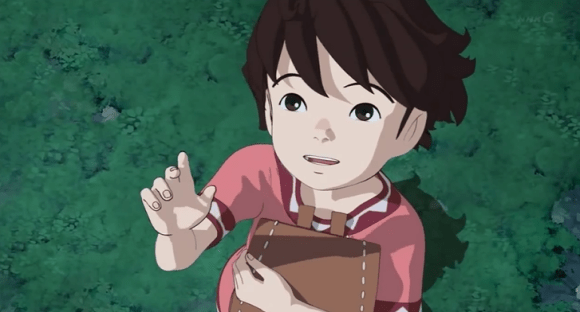
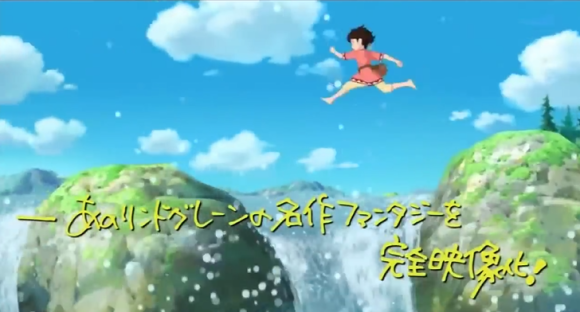
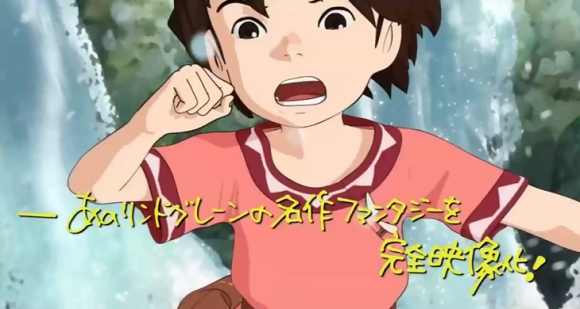
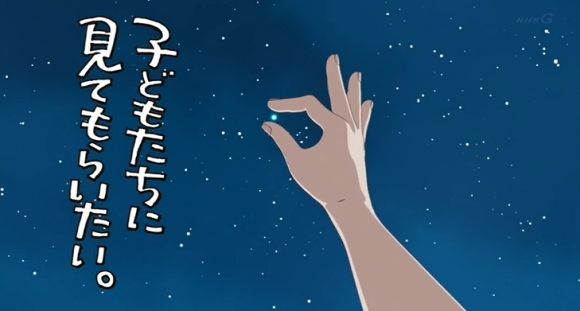
 Goro Miyazaki to direct Ronia the Robber’s Daughter TV anime
Goro Miyazaki to direct Ronia the Robber’s Daughter TV anime Studio Ghibli TV show soon to be available on Amazon Prime Video
Studio Ghibli TV show soon to be available on Amazon Prime Video “I didn’t ask the old men for any advice” says director of Studio Ghibli’s first CG anime
“I didn’t ask the old men for any advice” says director of Studio Ghibli’s first CG anime The first images of Studio Ghibli’s first-ever CG anime are here!【Photos】
The first images of Studio Ghibli’s first-ever CG anime are here!【Photos】 Studio Ghibli is not Studio Goro – Hayao Miyazaki’s son denies being his father’s successor
Studio Ghibli is not Studio Goro – Hayao Miyazaki’s son denies being his father’s successor We revisited Sweets Paradise after a decade to see if Japan’s dessert buffet still delivers
We revisited Sweets Paradise after a decade to see if Japan’s dessert buffet still delivers Harajuku’s new permanent Tamagotchi shop is filled with cuteness and a surprising lack of poop
Harajuku’s new permanent Tamagotchi shop is filled with cuteness and a surprising lack of poop Japan’s two-month Shut-in Pilgrimage – A 1,200-year-old way to deal with a modern issue
Japan’s two-month Shut-in Pilgrimage – A 1,200-year-old way to deal with a modern issue Japanese thug wear from Birth Japan perfect for those breaking bad next year
Japanese thug wear from Birth Japan perfect for those breaking bad next year Japan has an awesome one-person bento box rice cooker, and here’s what we made with ours
Japan has an awesome one-person bento box rice cooker, and here’s what we made with ours Tokyo all-you-can-eat tonkatsu pork cutlet restaurant is all we need for a happy meal
Tokyo all-you-can-eat tonkatsu pork cutlet restaurant is all we need for a happy meal You can now buy a Japanese train station clock in Japan
You can now buy a Japanese train station clock in Japan Japan Misunderstood: 3 stereotypes that live on
Japan Misunderstood: 3 stereotypes that live on Is the new Shinkansen Train Desk ticket worth it?
Is the new Shinkansen Train Desk ticket worth it? Princesses, fruits, and blacksmiths: Study reveals the 30 most unusual family names in Japan
Princesses, fruits, and blacksmiths: Study reveals the 30 most unusual family names in Japan Starbucks Japan ready to get Year of the Horse started with adorable drinkware and plushies【Pics】
Starbucks Japan ready to get Year of the Horse started with adorable drinkware and plushies【Pics】 7-Eleven Japan’s ramen-cooking robot whipped us up a bowl of noodles【Taste test】
7-Eleven Japan’s ramen-cooking robot whipped us up a bowl of noodles【Taste test】 Cyberpunk anime meets traditional culture in Ghost in the Shell gold leaf Japanese changing screens
Cyberpunk anime meets traditional culture in Ghost in the Shell gold leaf Japanese changing screens 7 great places to see Mt. Fuji from without having to climb it
7 great places to see Mt. Fuji from without having to climb it Hello Kitty Choco Egg figures are an adorable trip through three periods of Japanese pop culture【Pics】
Hello Kitty Choco Egg figures are an adorable trip through three periods of Japanese pop culture【Pics】 Japan’s otoshidama tradition of giving kids money at New Year’s gets a social welfare upgrade
Japan’s otoshidama tradition of giving kids money at New Year’s gets a social welfare upgrade We found possibly the quietest Japanese-style hotel in Tokyo’s bustling Shinjuku district
We found possibly the quietest Japanese-style hotel in Tokyo’s bustling Shinjuku district Lacquerware supplier to emperor of Japan and Pokémon team up for new tableware
Lacquerware supplier to emperor of Japan and Pokémon team up for new tableware Sumo Sanrio! Hello Kitty and pals team up with Japan Sumo Association for new merch【Pics】
Sumo Sanrio! Hello Kitty and pals team up with Japan Sumo Association for new merch【Pics】 Can a dirty butthole make you filthy rich in Japan? We’re starting a New Year’s lottery experiment
Can a dirty butthole make you filthy rich in Japan? We’re starting a New Year’s lottery experiment 7-Eleven Japan starts new temporary luggage storage service in over 300 branches
7-Eleven Japan starts new temporary luggage storage service in over 300 branches Disillusionment at Tsukiji’s tourist-target prices led us to a great ramen restaurant in Tokyo
Disillusionment at Tsukiji’s tourist-target prices led us to a great ramen restaurant in Tokyo Starbucks teams up with 166-year-old Kyoto doll maker for Year of the Horse decorations【Photos】
Starbucks teams up with 166-year-old Kyoto doll maker for Year of the Horse decorations【Photos】 Tokyo considering law requiring more trash cans following litter increase in heavily touristed area
Tokyo considering law requiring more trash cans following litter increase in heavily touristed area Tokyo’s Tsukiji sushi neighborhood asks tour groups to stay away for the rest of the month
Tokyo’s Tsukiji sushi neighborhood asks tour groups to stay away for the rest of the month Nintendo’s Kirby now delivering orders at Kura Sushi restaurants, but not in Japan
Nintendo’s Kirby now delivering orders at Kura Sushi restaurants, but not in Japan Tokyo event lets you travel back in time, for free, to celebrate 100 years since Showa era start
Tokyo event lets you travel back in time, for free, to celebrate 100 years since Showa era start Sanrio theme park in Japan announces plans to expand into a Sanrio resort
Sanrio theme park in Japan announces plans to expand into a Sanrio resort Japan may add Japanese language proficiency, lifestyle classes to permanent foreign resident requirements
Japan may add Japanese language proficiency, lifestyle classes to permanent foreign resident requirements Survey asks foreign tourists what bothered them in Japan, more than half gave same answer
Survey asks foreign tourists what bothered them in Japan, more than half gave same answer Japan’s human washing machines will go on sale to general public, demos to be held in Tokyo
Japan’s human washing machines will go on sale to general public, demos to be held in Tokyo Japan’s deadliest food claims more victims, but why do people keep eating it for New Year’s?
Japan’s deadliest food claims more victims, but why do people keep eating it for New Year’s? We deeply regret going into this tunnel on our walk in the mountains of Japan
We deeply regret going into this tunnel on our walk in the mountains of Japan Studio Ghibli releases Kodama forest spirits from Princess Mononoke to light up your home
Studio Ghibli releases Kodama forest spirits from Princess Mononoke to light up your home Major Japanese hotel chain says reservations via overseas booking sites may not be valid
Major Japanese hotel chain says reservations via overseas booking sites may not be valid Put sesame oil in your coffee? Japanese maker says it’s the best way to start your day【Taste test】
Put sesame oil in your coffee? Japanese maker says it’s the best way to start your day【Taste test】 No more using real katana for tourism activities, Japan’s National Police Agency says
No more using real katana for tourism activities, Japan’s National Police Agency says Starbucks Japan reveals new sakura drinkware collection, inspired by evening cherry blossoms
Starbucks Japan reveals new sakura drinkware collection, inspired by evening cherry blossoms Updated cherry blossom forecast shows extra-long sakura season for Japan this year
Updated cherry blossom forecast shows extra-long sakura season for Japan this year Studio Ghibli to be acquired by Nippon TV as subsidiary company in stock purchase
Studio Ghibli to be acquired by Nippon TV as subsidiary company in stock purchase Ghibli reveals genre of Hayao Miyazaki’s next anime, and that it’s also working on new CG film
Ghibli reveals genre of Hayao Miyazaki’s next anime, and that it’s also working on new CG film Studio Ghibli puppets??!! Hayao Miyazaki’s son unveils Earwig and the Witch puppet show 【Video】
Studio Ghibli puppets??!! Hayao Miyazaki’s son unveils Earwig and the Witch puppet show 【Video】 New Studio Ghibli anime coming this winter is first CG feature planned by Hayao Miyazaki
New Studio Ghibli anime coming this winter is first CG feature planned by Hayao Miyazaki Watching Studio Ghibli’s first-ever all-CG anime was weird in weird ways【SoraReview】
Watching Studio Ghibli’s first-ever all-CG anime was weird in weird ways【SoraReview】 Beautiful cover artwork for Studio Ghibli tribute cover albums show Goro Miyazaki can draw too
Beautiful cover artwork for Studio Ghibli tribute cover albums show Goro Miyazaki can draw too Hayao Miyazaki has secret concept for next anime, considers all animators his rivals, son says
Hayao Miyazaki has secret concept for next anime, considers all animators his rivals, son says Studio Ghibli’s new CG anime is keeping its setting in the U.K., has official premier date
Studio Ghibli’s new CG anime is keeping its setting in the U.K., has official premier date Studio Ghibli director Goro Miyazaki creates charity character T-shirt for Japan’s 24-Hour TV
Studio Ghibli director Goro Miyazaki creates charity character T-shirt for Japan’s 24-Hour TV Hayao Miyazaki gives interview on Earwig and the Witch, praises use of CG and son’s skills【Video】
Hayao Miyazaki gives interview on Earwig and the Witch, praises use of CG and son’s skills【Video】 Hayao Miyazaki’s latest comeback is so that he can leave an anime behind for his grandson
Hayao Miyazaki’s latest comeback is so that he can leave an anime behind for his grandson Studio Ghibli’s Earwig and the Witch gets new footage for theatrical release
Studio Ghibli’s Earwig and the Witch gets new footage for theatrical release Hayao Miyazaki makes rare video appearance to check out Ghibli Museum’s revamped cafe【Video】
Hayao Miyazaki makes rare video appearance to check out Ghibli Museum’s revamped cafe【Video】 “Let’s leave it to Goro” – The moment Hayao Miyazaki was truly convinced about Ghibli theme park
“Let’s leave it to Goro” – The moment Hayao Miyazaki was truly convinced about Ghibli theme park List of anime directors fans expect the most from topped by….Goro Miyazaki?!
List of anime directors fans expect the most from topped by….Goro Miyazaki?! Japanese men pick their favorite Studio Ghibli anime heroine 【Survey】
Japanese men pick their favorite Studio Ghibli anime heroine 【Survey】
Leave a Reply